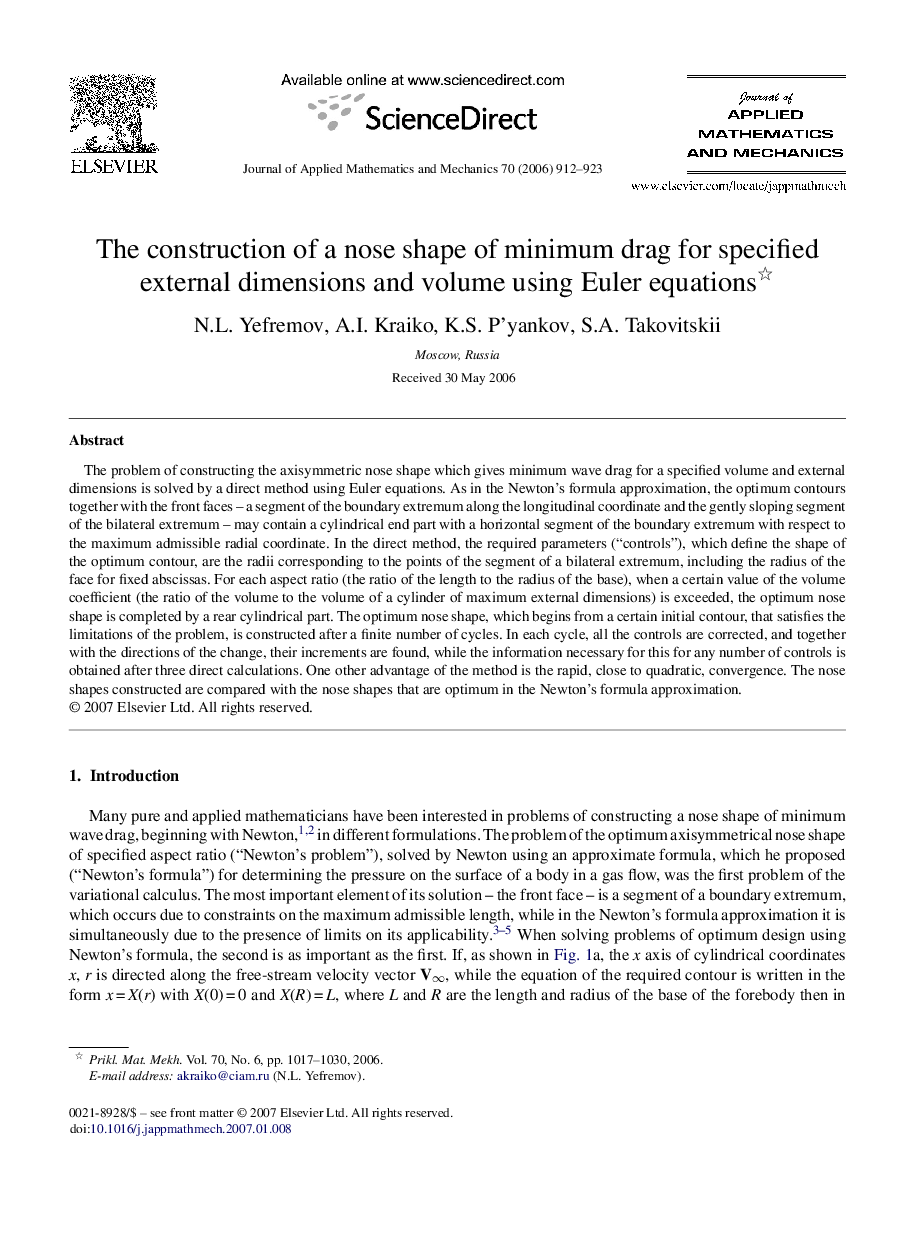| Article ID | Journal | Published Year | Pages | File Type |
|---|---|---|---|---|
| 795610 | Journal of Applied Mathematics and Mechanics | 2006 | 12 Pages |
The problem of constructing the axisymmetric nose shape which gives minimum wave drag for a specified volume and external dimensions is solved by a direct method using Euler equations. As in the Newton's formula approximation, the optimum contours together with the front faces – a segment of the boundary extremum along the longitudinal coordinate and the gently sloping segment of the bilateral extremum – may contain a cylindrical end part with a horizontal segment of the boundary extremum with respect to the maximum admissible radial coordinate. In the direct method, the required parameters (“controls”), which define the shape of the optimum contour, are the radii corresponding to the points of the segment of a bilateral extremum, including the radius of the face for fixed abscissas. For each aspect ratio (the ratio of the length to the radius of the base), when a certain value of the volume coefficient (the ratio of the volume to the volume of a cylinder of maximum external dimensions) is exceeded, the optimum nose shape is completed by a rear cylindrical part. The optimum nose shape, which begins from a certain initial contour, that satisfies the limitations of the problem, is constructed after a finite number of cycles. In each cycle, all the controls are corrected, and together with the directions of the change, their increments are found, while the information necessary for this for any number of controls is obtained after three direct calculations. One other advantage of the method is the rapid, close to quadratic, convergence. The nose shapes constructed are compared with the nose shapes that are optimum in the Newton's formula approximation.
